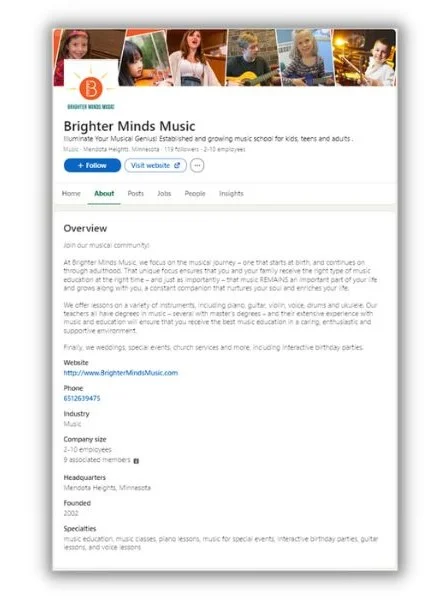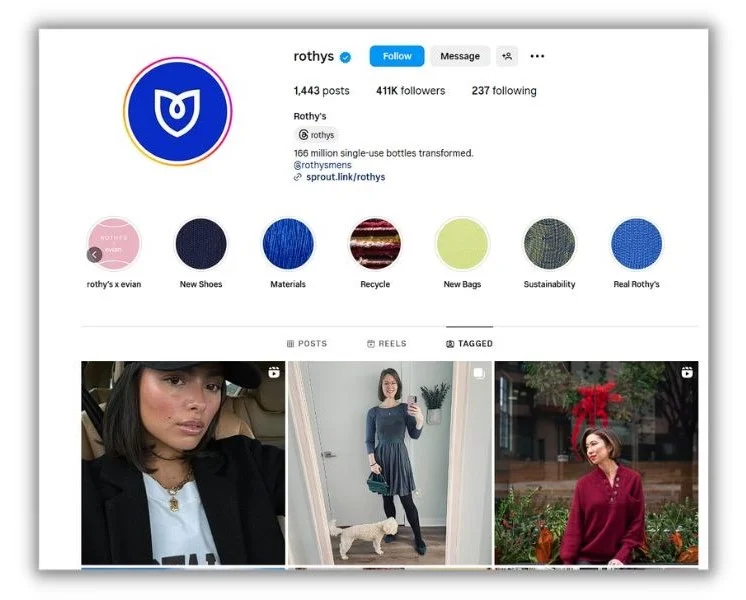There are 4.95 billion social media users in the world. And that’s why roughly 94% of businesses try to maintain an active presence on social media.
Businesses ranging from small mom-and-pop stores to large enterprises try to post regularly, engage with their audience, garner goodwill, generate leads, and improve sales through social media platforms.
But, posting regularly is not enough.
To enhance engagement, reach, and brand visibility, you need a broader understanding of social media optimization.
Here’s what we’ll cover in this post:
- What is social media optimization?
- Benefits of social media optimization
- How to do social media optimization
What is social media optimization?
Social media optimization (SMO) is the use of social media to grow and manage a brand’s message and presence online. It’s more than just posting content on social media platforms, though. It’s about crafting and sharing content that reaches specific audiences and resonates with them.
The optimization process involves fine-tuning messages for various platforms, understanding audiences through analytics, engaging with users, and using hashtags and keywords for better visibility.
SMO aims to create content that sparks interaction, boosts brand presence, and enhances brand perception online.
Benefits of social media optimization
Social media optimization can be a powerful tool in enhancing your online presence. Here are some of the major benefits you can get from social media optimization:
- Expands your digital presence: A more optimized social media presence makes your brand more visible and recognizable across various social platforms.
- Optimizes your social media content: You can turn social media into a highly cost-effective channel with a high return on investment. Some studies report ROI as high as 250%.
- Builds stronger customer relationships: Regular, relevant interactions on social media give you more chances to connect with customers and build brand loyalty.
- Enhances search engine rankings: Active social media engagement can help you get more backlinks (an SEO ranking factor) and your social accounts may end up on search results pages for some terms.
- Helps you monitor competitor and industry trends: Social listening, a part of SMO, lets you see what your customers and competitors are talking about online.
🛑 The ultimate growth tip is to have a plan. Use this Growth Strategy Template to get all of your marketing efforts working efficiently together.
How to do social media optimization
Now that you know why you should be doing social media optimization, let’s look at 11 ways you can do it.
1. Fully fill out all the fields for your social media profiles
A complete profile ensures visitors get a full and engaging picture of your brand, boosting engagement and growth. Here are the most important parts of your profile to get right:
- Profile and cover photos: Choose clear, brand-aligned images. Your logo is ideal for the profile picture. Use a creative, message-driven image for the cover.
- Bio and about: Write a clear, short description. Use industry-relevant keywords for better searchability. Highlight your mission especially if you are in the education or healthcare sectors.
- Contact details: Include current contact information like phone, email, and a website link. This is crucial for service-oriented businesses.
- Location: Add your location, especially if you’re a local business like a retail store or a restaurant. It helps in local searches and guides customers to you.
- Story section: If available, share your business history or philosophy in Stories. It’s great for deeper engagement.
Look at the LinkedIn profile of Brighter Minds Music, a Minneapolis-based institute that offers music education:

Their About page describes what the institution does and makes sure you have plenty of ways to contact them.
All social media platforms give you the option to fill out the above information when creating your page. You can also edit this information at any time. Optimize your About page and give yourself the best chance to get inbound leads, calls, and web traffic.
2. Use relevant and branded images
Using the right images in your posts boosts your brand’s visual impact. Choose images that are relevant and reflect your brand. Here’s how:
- Stick to a consistent color scheme and style: Solidify Brand recognition and make visiting your social profiles more enjoyable.
- Use high-resolution images: Convey professionalism and attention to detail.
- Include your logo or brand colors subtly: Make them identifiable but not overwhelming.
- Ensure your images align with your post’s message: Reinforce your communication and make it all more memorable.
- Mix stock images with original photos: Avoid losing authenticity with too many stock photos.
Have a look at the Instagram page of Escape Campervans.

The thumbnails it uses for each story follow the same color theme, all images are high resolution, and each image and video are highly relevant to what they do.
3. Add your business information
Adding accurate business information to your social media profiles makes your business more accessible to your potential customers. Here’s how to do it effectively:
- Be clear: Include exact details about what your business offers.
- Keep information current: Changes in services, hours, or contacts should be promptly reflected.
- Make your contact information easy to find: People should be able to spot your phone number and/or email easily from your profile page.
- Add your location: If you’re a physical business, you want your social account to lead customers to your doorstep.
- Add a direct link to your website: It offers an immediate connection for more information.
4. Post at the right times
Posting at the right times ensures maximum visibility and engagement for your content. Here’s how to nail the timing:
- Find out when your audience is online: Different platforms have different peak times so test to see when your audience is live on each.
- Remember time zones: If your audience is global, adjust your schedule accordingly.
- Experiment with posting times: Track engagement to find the best slots.
5. Post the right types of content
A balanced mix of content types caters to diverse preferences, keeping your audience engaged and interested. Here’s how to mix it up:
- Post text, images, videos, and infographics: Experiment with slides and ephemeral content. Different formats appeal to different segments of your audience. By posting regularly, you will soon figure out what your audience prefers.
- Take advantage of video’s higher engagement rates: Include live streams, tutorials, or behind-the-scenes clips.
- Use Stories for quick updates or special offers: More than 500 million people interacted with Instagram stories daily in 2019. Since then, Instagram has gone from 1 billion users to 1.4 billion. That makes Instagram Stories the perfect avenue to get a lot of views.
- Share industry insights, tips, or educational content: This positions you as a thought leader.
- Add interactive elements to your post: Use polls, quizzes, and questionnaires to engage your audience actively.
- Post user-generated content: Showcase content from your customers or followers.
Rothy’s, a sustainable shoe and accessory brand, encourages customers to post photos of their products in use.

The company regularly features these customer photos on its Instagram page, enhancing its community feel and showcasing real-life uses of its products. Take a page out of their book and post user-generated content about your businesses to get more engagement.
6. Use relevant hashtags
Using the right hashtags increases the reach of your posts and connects you with your target audience. Here’s how to find and use hashtags to get more eyes on your posts
- Find keywords and hashtags that are popular in your industry: Start by exploring competitor pages for relevant hashtags and avoid those that are overused.
- Create unique hashtags for your brand: Build brand identity and increase user engagement by creating new hashtag campaigns. For example, Frank Body, known for its coffee scrubs, created the hashtag #thefrankeffect. Customers use this hashtag to show before-and-after photos of their skin, demonstrating the product’s effects.
- Use hashtags for special events or specific campaigns: It’s a great way to track engagement and amplify your event promotions. For example, organizations participating in South by Southwest® use the hashtag #SXSW with their posts that are relevant to the event.
- Keep hashtags relevant to your content: Irrelevant hashtags can alienate your audience, just waste space, and annoy people who aren’t interested in what you do.
- Don’t use too many hashtags: Too many hashtags can be overwhelming, stick to a few impactful ones.
- Track, test, and try: See which hashtags perform best and adjust your strategy accordingly.
7. Promptly respond to DMs
Prompt responses to DMs show your commitment to customer service and audience engagement. Here’s how to manage DMs effectively:
- Reply quickly: Timeliness shows you value your audience.
- Use automated messages for initial contact: Set automated messages that can respond when you’re offline, just be sure they don’t sound flat and that a personal touch follows.
- Reflect your brand voice: Your replies should be professional yet approachable and maintain the same tone as your brand voice.
- Address issues promptly and privately: If a customer posts an issue, respond quickly in public but move the conversation to DMs.
- Keep track of conversations: Use a marketing dashboard that lets you track conversations with leads and customers.
8. Respond to and engage with comments on your social media pages
Engaging with comments strengthens your relationship with your audience. Here are some ways to optimize your replies for better results:
- Reply to comments as quickly as possible: Quick responses show that you’re attentive and value your audience’s input.
- Make sure your replies reflect your brand’s voice: Whether it’s professional, friendly, or quirky.
- Tackle negative feedback constructively: Offer solutions and show a willingness to improve.
- Start a dialogue: Ask follow-up questions, get their opinions, or direct people to more content and keep the conversation going.
- Express gratitude for positive comments: A simple thank you goes a long way.
- Use comments as a source of feedback: Comments are golden nuggets of customer feedback, use them to understand your audience better and refine your strategy.
Eloquii, a plus-size fashion brand, regularly engages with customers and influencers on social media.

They respond positively to customer posts, re-share content where their clothing is featured, and maintain an uplifting dialogue with their community. Follow their example and respond to positive and negative comments promptly.
9. Engage with other accounts
Engaging with other accounts broadens your reach and establishes your presence in the online community. Here’s how to do it right:
- Follow industry peers, influencers, and potential clients: Build connections with other accounts that share the same audience as you.
- Leave thoughtful comments on others’ posts: It shows genuine interest and attracts the attention of their followers.
- Share relevant content from others: It’s a great way to post more frequently, just make sure to tag them so they get credit.
- Look for collaboration opportunities: It’ll expand your reach and get you a whole new source for fresh content.
- Participate in relevant online discussions and forums: Customers will see you being active in the community.
- Stay consistent but not overwhelming: Too much exposure, especially if it’s promotionally, can turn off even your biggest fans.
Follow the example of Brooklyn Brewery. Their team maintains a lively presence on social media by engaging with both customers and other local businesses.

They often share content from local events or collaborations and have built a community of followers through their interactions.
10. Follow the analytics
Using analytics helps you create more impactful content and refine your social media strategy for better engagement. Here’s how analytics can guide you:
- Start with the basics: Look at the likes, shares, comments, and click-through rates on your posts to reveal what resonates with your audience.
- Track referral traffic: Understand which platforms send the most people to your website.
- Lean into the right content type: Identify which types of posts are most successful: videos, images, or user-generated content.
Analytics show when your audience is most active and what content they prefer. Use the insights you gain through analytics to tweak your strategy. Maybe your followers prefer short videos, maybe they respond better to posts you make on the weekend—your analytics data will show you what to do. Try new content types and posting times based on analytics and observe the response.
👋 Speaking of analytics, how are your Facebook ads doing? Compare your success against your industry peers with our Facebook Ads Benchmark report.
11. Try new channels and technologies
Social media optimization takes experimentation. Once you’ve got on track on a couple of platforms, start testing other social media channels and try out some new features.
- Embrace emerging technologies: Use Instagram’s or Snapchat’s AR features to create branded filters. This can be as simple as a logo overlay or an interactive product demonstration.
- Diversify across platforms: Expand your presence across multiple platforms to reach varied audiences. Tailoring content to each platform’s style and audience can unveil unexpected opportunities, as shown by fitness instructor Dan Go’s success on LinkedIn.
- Expand into new content types: If you’ve amassed a following with your written educational posts, try videoing yourself explaining those topics and posting them on YouTube.
Use social media optimization for higher engagement
Social media is about building relationships. If you want to get the most out of your investment in social media marketing, engage with your audience, listen to their feedback, and continually evolve your approach. Do that and you’ll grow your online presence and strengthen your brand.
Get going with these social media optimization steps:
- Fully fill out your social media profiles
- Use relevant and branded images
- Add your business information
- Post at the right times
- Post the right types of content
- Use relevant hashtags
- Promptly respond to DMs
- Respond to and engage with comments
- Engage with other accounts
- Follow the analytics
- Try new channels and technologies






